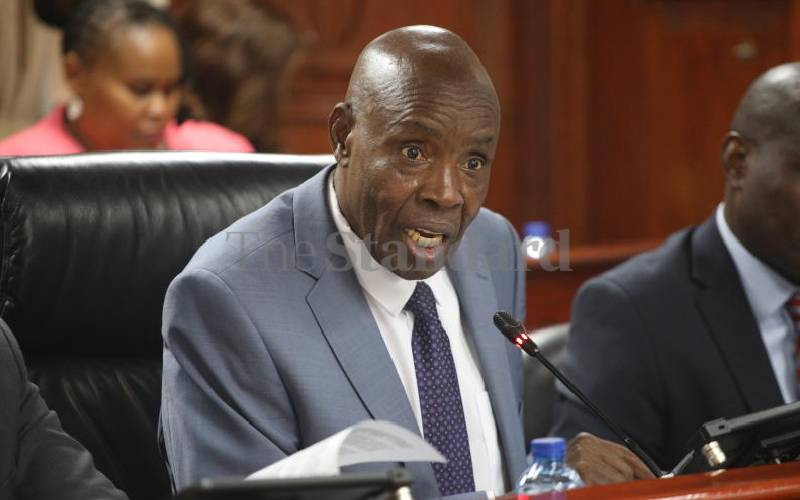Education is the most powerful weapon, which you can use to change the world, quoted South African activist and former President Nelson Mandela.
Funding education is one of the biggest investments any country can make for its current and future generations. Currently, about 420 million people across the world could grow out of poverty with secondary education, consequently improving the quality of life globally by more than half.
Today, more and more people across Africa are required to stay home due to lockdown interventions put in place by governments to curb spread of Covid-19, which has triggered a massive shift towards remote learning. This has meant growth in the usage of collaborative tools such as Microsoft’s Teams to create virtual classrooms where tutors can communicate with their students in real-time.
In the Middle East and Africa Emerging markets alone, over 1.5 million students and teachers are leveraging on Microsoft Teams as the remote learning platform during this pandemic period.
Through such platforms, educators can connect and support students in much the same way they could do in person with live meetings where they are able to teach through live videos, share presentations, and even invite external speakers for virtual field trips. But, as students and educators move online, naturally there is an increase in the risks to cyber security and safety.
As we adjust to the new normal and governments take the much needed steps towards safely re-opening the economies and adopting possible return to school strategies, blended learning will play a key role in ensuring some of the non–essential aspects of learning that do not require face to face interaction are enabled while ensuring the online safety and security of students.
Educational institutions, therefore, need to take steps to ensure that digital learning environments are safe by setting up concrete policies and restrictions when using these tools to guard students’ safety. They must ensure online classrooms remain engaging and give educators the tools they need to create a focused learning environment.
Already, there have been multiple occurrences around the world, where unauthorised users have accessed virtual classrooms. Just last month alone, we saw an online graduation ceremony interrupted with racial slurs by hackers. Again, last month a man gained access to an online class and exposed himself while another online lecture was interrupted by playing audio of inappropriate content.
When educators set up meetings to teach students, a link is created, which participants can use to enter these meetings. Sharing these links online to reach students can seem like a quick and easy way to communicate, but this also opens meetings up to anyone who sees the link.
To ensure safe meeting of educators and students for learning online, administrators should instead create identities (or profiles) for each student and teacher, which requires them to log into the tool to join the meeting. Within Teams, for example, administrators can choose to turn off the ability for anonymous users to join the meeting by changing it within the meeting policies.
Within meetings, educators can make sure all students are present in the classroom and there are no unexpected guests by clicking on ‘show participants’ icon in the meeting controls giving them liberty to chose who to admit in the lesson.
Educators are often required to manage students in physical classrooms to ensure good behaviour and keep students focused on learning the coursework being taught. This is required when teaching online as well.
Online classrooms introduce a new dynamic to teachers and students alike, which helps in managing disruptions and curbing inappropriate messaging. This is a task which educators need to perform in new ways. These disturbances can also appear in the form of unauthorised users with disruption being their main goal.
To manage disruptions, administrators should limit students’ ability to schedule meetings, initiate private calls and monitor chat sessions. This can be done by restricting students roles within a meeting.
The writer is Microsoft Education Lead for North, West, East & Southern Africa, Levant & Pakistan countries
Stay informed. Subscribe to our newsletter
 The Standard Group Plc is a
multi-media organization with investments in media platforms spanning newspaper
print operations, television, radio broadcasting, digital and online services. The
Standard Group is recognized as a leading multi-media house in Kenya with a key
influence in matters of national and international interest.
The Standard Group Plc is a
multi-media organization with investments in media platforms spanning newspaper
print operations, television, radio broadcasting, digital and online services. The
Standard Group is recognized as a leading multi-media house in Kenya with a key
influence in matters of national and international interest.
 The Standard Group Plc is a
multi-media organization with investments in media platforms spanning newspaper
print operations, television, radio broadcasting, digital and online services. The
Standard Group is recognized as a leading multi-media house in Kenya with a key
influence in matters of national and international interest.
The Standard Group Plc is a
multi-media organization with investments in media platforms spanning newspaper
print operations, television, radio broadcasting, digital and online services. The
Standard Group is recognized as a leading multi-media house in Kenya with a key
influence in matters of national and international interest.








